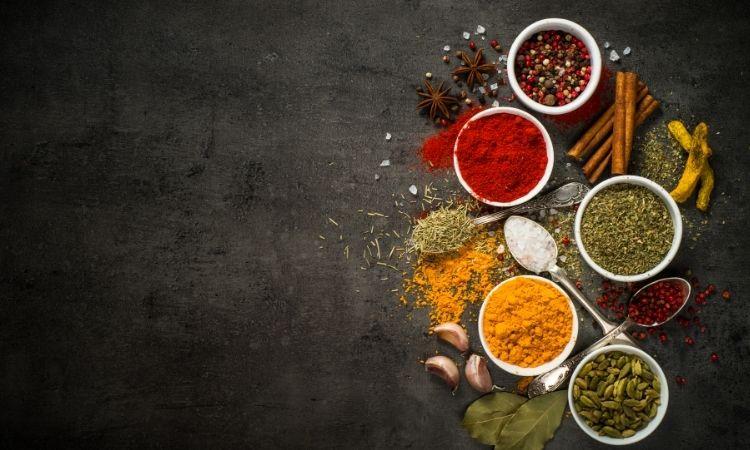The Allure of Spices: Unlocking the Secrets of Flavor

Spices have been the cornerstone of culinary traditions for centuries, adding depth, richness, and character to cuisines worldwide. They are more than just flavoring agents—they’re an integral part of history, culture, and even medicine. From the robust warmth of cinnamon to the fiery punch of chili, spices enhance not only the taste but also the aroma and texture of food. Whether used in cooking or as a health remedy, spices have a timeless appeal that continues to captivate food lovers and chefs alike.
Expert Market Research: Unveiling the Dynamics of India Spices
At Expert Market Research, we’ve analyzed the evolving spice market, paying particular attention to India spices, which play a vital role in the global spice trade. India’s dominance in spice production is not just limited to quantity; the quality and variety it offers have made it a preferred choice for international buyers. As demand for exotic and organic spices rises, India’s spice industry is adapting, embracing sustainable farming practices and modern processing technologies. The market for Indian spices is projected to continue its upward trajectory, driven by increasing global interest in health-conscious food and ethnic flavors. Our team of experts at Expert Market Research is continually tracking these trends, providing valuable insights into the opportunities and challenges faced by the Indian spice industry. By understanding consumer preferences and market dynamics, businesses can position themselves effectively to benefit from the growing spice trade.
India Spices: The Heart of Spice Culture
When it comes to spices, India stands out as a powerhouse. Known as the "Spice Bowl of the World," India is the largest producer and exporter of spices globally. The rich diversity of its climate and soil allows for the cultivation of a wide variety of spices such as turmeric, cumin, coriander, cardamom, and cloves. Indian spices are prized for their distinct flavors and therapeutic properties, playing a significant role in traditional medicine systems like Ayurveda. The country's spice markets are vibrant and bustling, with every region offering unique blends and varieties that add a distinct touch to dishes. Whether in the aromatic curries of the south or the spicy gravies of the north, India spices form the foundation of a multitude of traditional and contemporary dishes. The Indian spice industry is thriving, driven by a blend of traditional knowledge and modern innovations in cultivation and processing methods.
The Rising Demand for Exotic Spices
In recent years, the demand for exotic spices has seen a significant increase. Consumers worldwide are becoming more adventurous with their palates, seeking out unique flavors and ingredients that offer more than just basic seasoning. Spices like saffron, vanilla, and sumac have surged in popularity, finding their way into everyday meals and gourmet dishes alike. The rise of food-centric media, including cooking shows and social media platforms, has fueled this desire for culinary exploration. As people discover the complexities of spice flavors, their purchasing power has shifted toward high-quality, ethically sourced, and organic spices.
This growing demand is prompting spice producers to innovate, offering more premium products such as spice blends, ready-to-use spice mixes, and organic variations. Spices are now seen not only as flavoring agents but also as functional ingredients, packed with health benefits. They contribute to a wide array of uses beyond the kitchen, including in cosmetics, wellness products, and dietary supplements.
Regional Insights: Exploring the Spice Markets
The spice market is not monolithic; it varies significantly by region. In Southeast Asia, for example, spices are not only a culinary necessity but also a major part of the cultural fabric. Countries like Indonesia and Thailand are known for their aromatic blends of spices, such as lemongrass, kaffir lime, and ginger. These regions emphasize fresh, local spices that are ground and used within hours of harvest, ensuring maximum flavor.
In Africa, spices like berbere (Ethiopia) and peri-peri (South Africa) bring unique flavors that define entire cuisines. The African spice market is seeing a revival, with interest growing both locally and globally in the traditional uses of spices in dishes such as stews and marinades. Meanwhile, Europe has seen the rise of fusion cuisine, where spices are used in innovative ways, blending old-world European cooking styles with influences from India, Africa, and the Middle East.
The Modern Spice Trade: Challenges and Opportunities
Despite the increasing demand, the spice trade faces several challenges. One of the major concerns is the sustainability of spice farming. Many spice-growing regions struggle with issues related to soil depletion, climate change, and water scarcity. There is a growing need for eco-friendly farming practices that ensure the long-term viability of spice cultivation. Fortunately, innovations in agricultural technology and sustainability efforts are helping to address these concerns, with more spice farmers adopting practices that promote soil health and water conservation.
The spice industry is also grappling with the complexities of global supply chains. With spices being grown in remote areas, transportation logistics can be a hurdle. However, advances in shipping and packaging technologies are making it easier to deliver spices faster and in better condition.
Another challenge is the risk of adulteration and contamination. Spices are often subject to fraud, where cheaper fillers are mixed with genuine products, leading to quality concerns. To combat this, regulations are being strengthened, and certification processes like Fair Trade and organic certifications are being increasingly adopted to guarantee the authenticity and safety of spices.
Spices as a Health Trend
Spices are making a comeback, not only for their culinary uses but also for their health benefits. From turmeric’s anti-inflammatory properties to cinnamon’s ability to regulate blood sugar levels, spices are now considered superfoods. Consumers are more aware of the health benefits that certain spices offer, and this has led to an increased use of spices in supplements and health food products. Companies are capitalizing on this trend by launching spice-infused products, such as turmeric lattes, ginger shots, and cinnamon protein powders. This is helping to raise the profile of spices as not just flavor enhancers but as essential ingredients for wellness.
The Future of the Spice Industry
Looking ahead, the spice market is poised for further growth. With the rise of plant-based diets and the growing interest in healthy eating, spices will continue to play an essential role in enhancing the flavor and nutritional value of meals. There is also an increased focus on traceability and transparency in the spice supply chain, driven by consumer demand for ethically sourced ingredients.
As the spice industry evolves, companies will need to adapt to changing consumer preferences, technological innovations, and sustainability requirements. By embracing these challenges, the spice industry can continue to thrive, offering both traditional flavors and new culinary experiences to the world.
- Marketing & Social Media
- AI & Digital Tools
- Science & Innovation
- Business & Finance
- Education & Learning
- Technology & Gadgets
- Family & Relationships
- Parenting & Kids
- Fashion & Beauty
- Travel & Culture
- News & Politics
- Home
- Literature
- Music
- Networking
- Other
- Party
- Religion
- Shopping
- Sports
- Theater
- Wellness
- Art
- Causes
- Crafts
- Dance
- Drinks
- Film
- Fitness
- Food
- Gardening
- Health
- Oyunlar



